While learning about microscopy during the last year, I’ve also been on the look out for information on historical items which were designed for use in the ultraviolet (UV) region. Although the vast majority of lenses are based on glass optical lenses, manufacturers have occasionally made UV lenses using materials such as quartz and calcium fluoride instead of glass, in order to let short wavelength UV light through. Leitz made a number of objectives and condensers for UV, which I’ve previously written about here, here and here. Lomo made a wide range of UV objectives, photoeyepieces and condensers, containing quartz lenses and their 10x objective is discussed here and photoeyepieces here. Zeiss have made probably the widest range of lenses and objectives for UV, marketed under the Ultrafluar label. These were available for the 160mm finite tube length microscopes, and continue to be made for the more modern design infinite tube microscopes. I have a few of these Zeiss objectives, and will write further on them after a bit more work with them. Before the Ultrafluars though they also made a quartz condenser and objectives, however it is harder to track down information on them given their age.
A few months ago I came across someone selling what was advertised as a Zeiss quartz condenser, and after a bit of discussion I bought it. For nearly 6 months it remained sitting on a shelf in the US, and I finally got it a few weeks ago. It consisted of 3 parts – the main body of the condenser with an adjustable iris, 2 additional lenses, all contained in a wooden box as shown below.
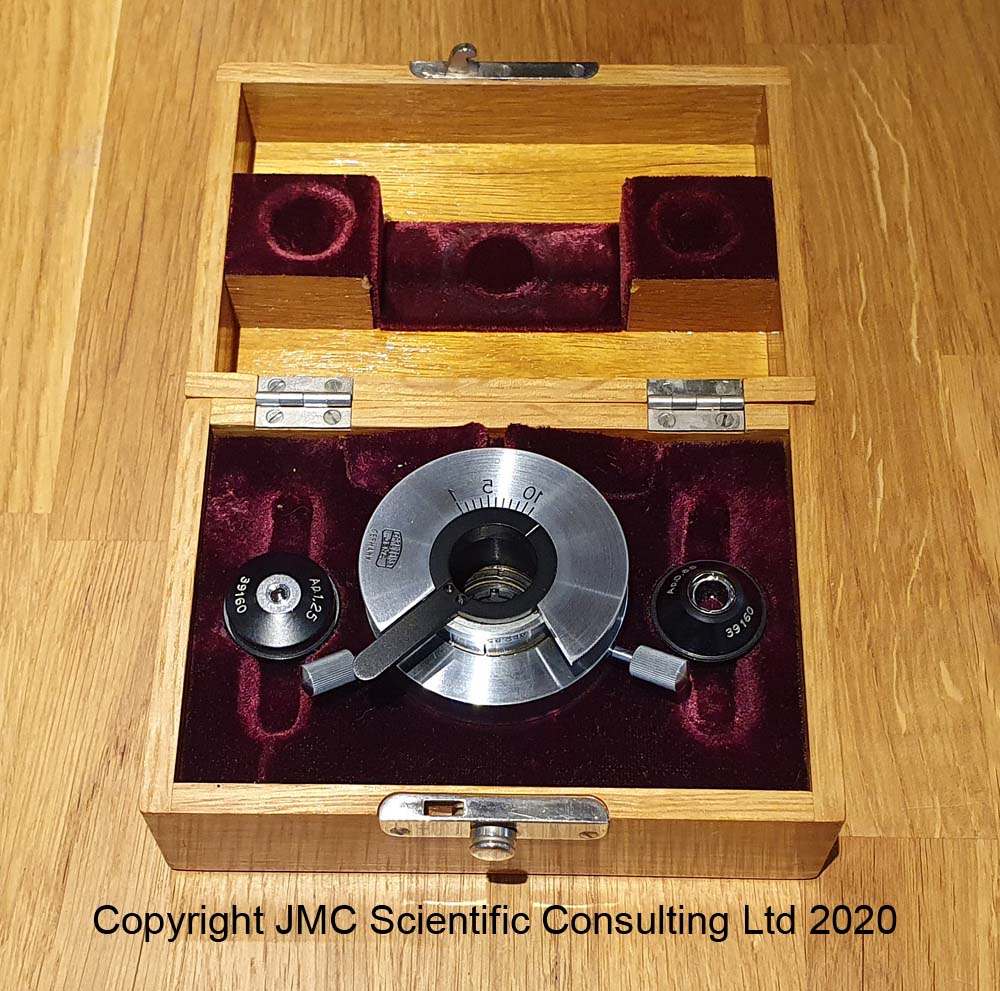
A search online revealed nothing about this, so my first check was a transmission measurement, which showed the following.
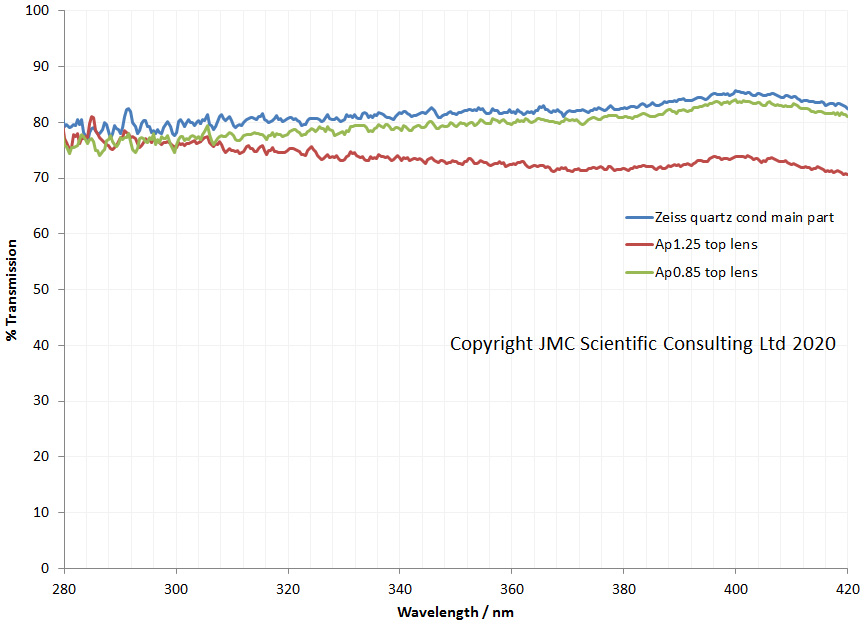
It was a huge relief to see it confirmed that these were definitely not glass but quartz lens elements (glass transmission would drop in the UV while these remained constant). Phew.
The history of the equipment I have is important to me, as I like to learn about what things were used for before and when they were made. To try and find out about this condenser set I approached the Zeiss Archives, with the hope that they could cast some light on it and when it was made. Unfortunately they couldn’t find record of this one, but that wasn’t a huge surprise as these would have been rare items with very few being made. To try and find something out about it, the next step was to get back in touch with the vendor. They pointed me towards a Zeiss Microscopes catalogue from 1934 which listed it. This was a period of time when catalogues were real hard back books, and I managed to track down a copy here in the UK. On examination it was indeed in the catalogue as shown below (with the part number given as 11 42 50).
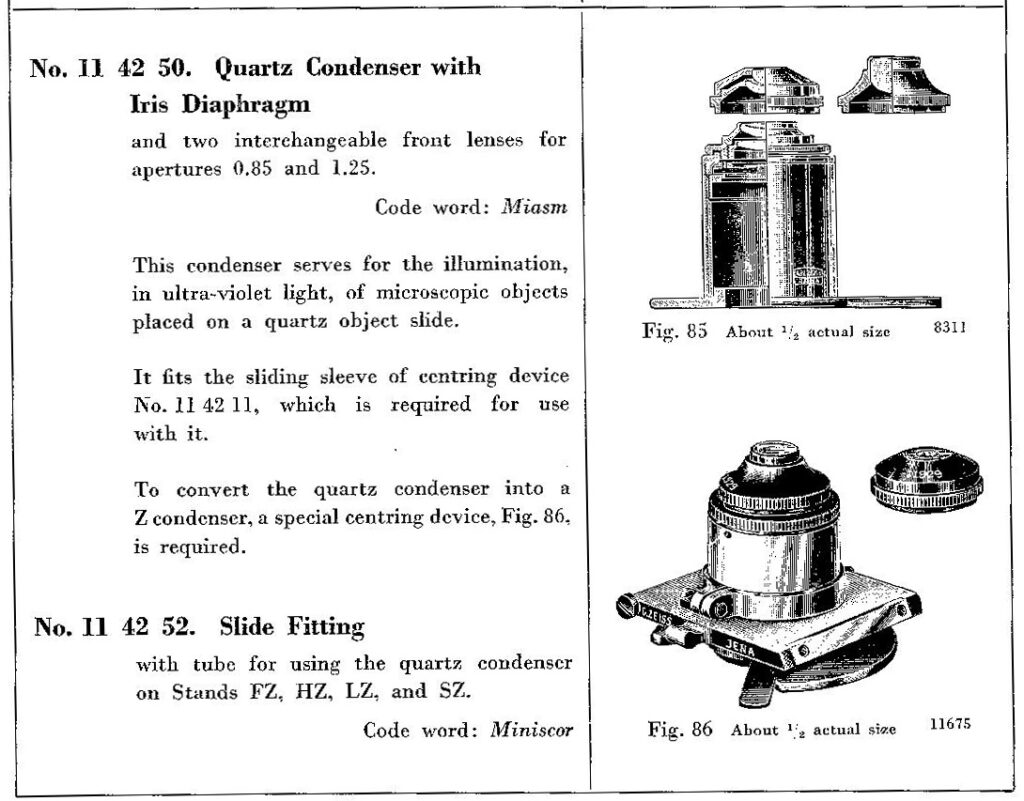
Interestingly it also appears in a 1927 Zeiss book with the same part number.
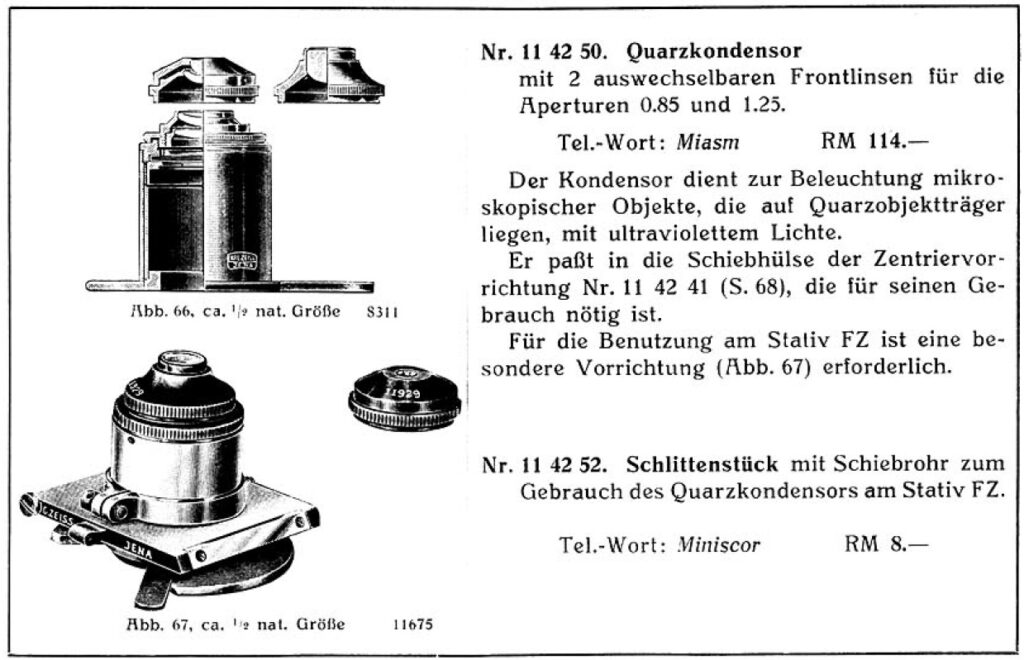
Something with the same part number (this time shown as 11.4250) but slightly different numerical apertures for the lenses even appears as far back as the 1913 catalogue.
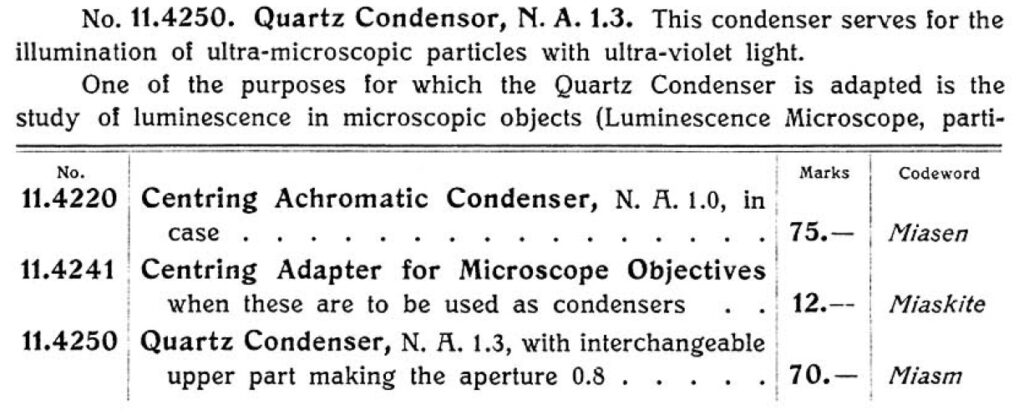
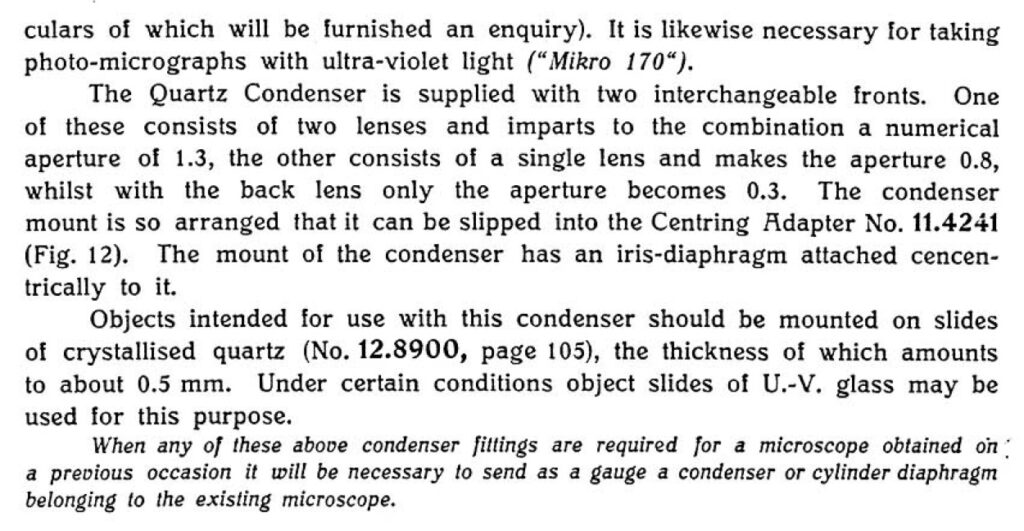
Looking back through some pre-1913 ones I couldn’t find any mention of it. It looks therefore that mine is probably from somewhere between 1913 and 1934, although I’ve not been able to verify how long it was made for after 1934. They really did make these well – the iris moves and adjusts as if it were made yesterday.
In the research world it is very easy to become fixated on the future, the goal of the work. We should not forget the great science and engineering that has already been done in order to get us to where we are. As with all historical research, it was fascinating to dig into the archives to try and find out about this condenser. It introduced me to the Zeiss Archives, a vast online database of equipment (although only in German, which makes things a little more challenging), and along the way I’ve been able to learn about other areas which will help with my work in the future.
If you’ve made it this far, thanks for reading, and if you’d like to more about this or any other area of my research, you can reach me here.
